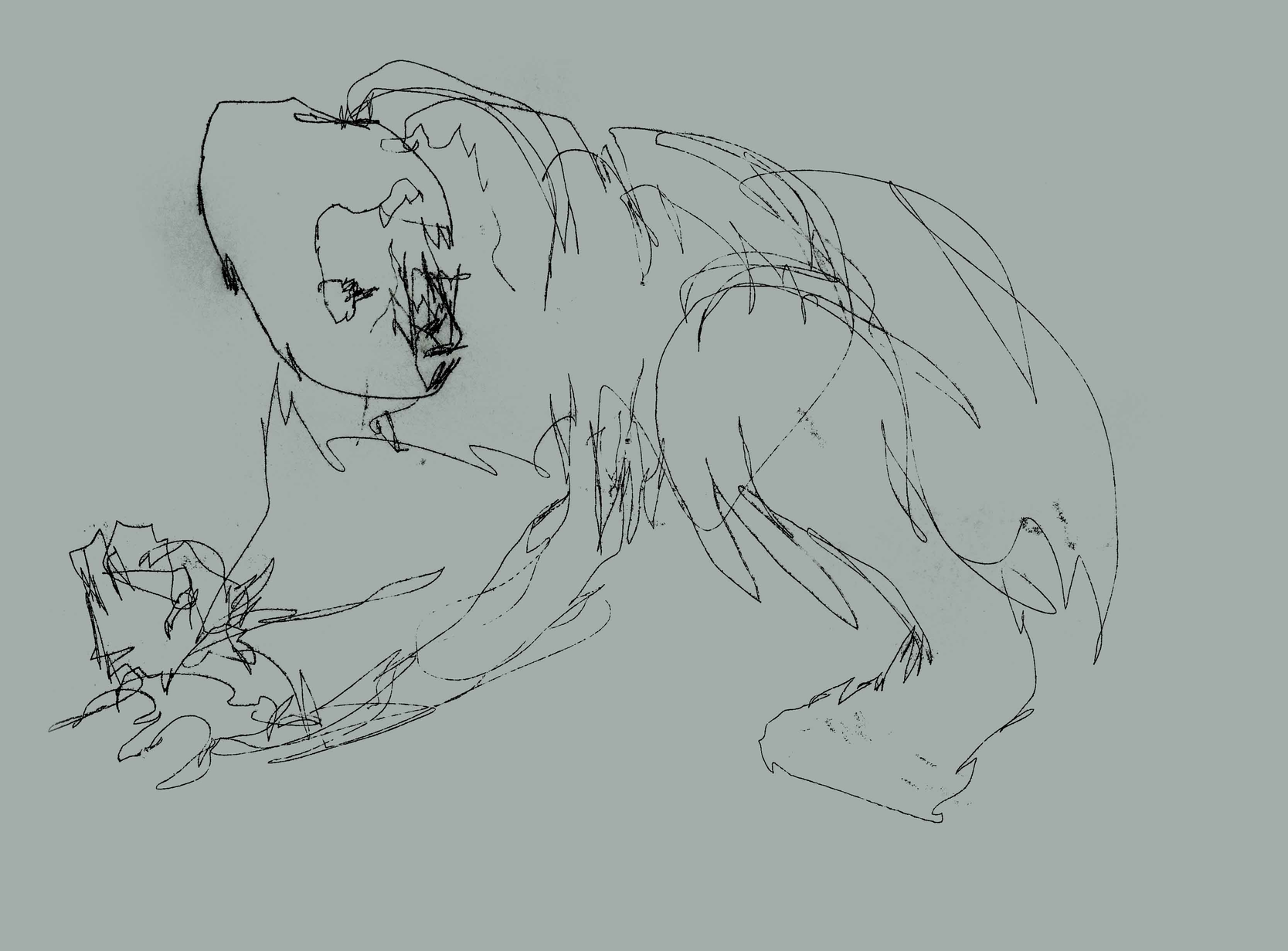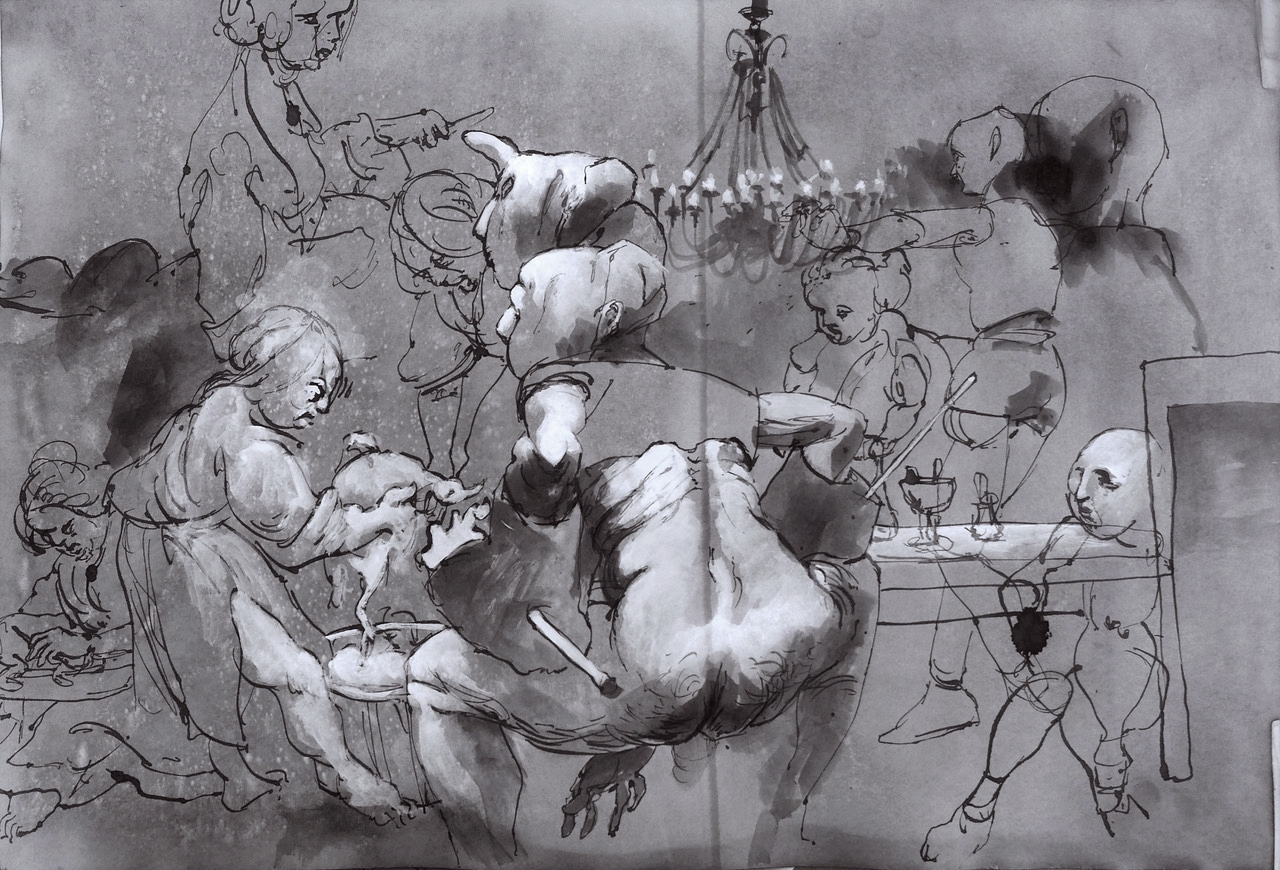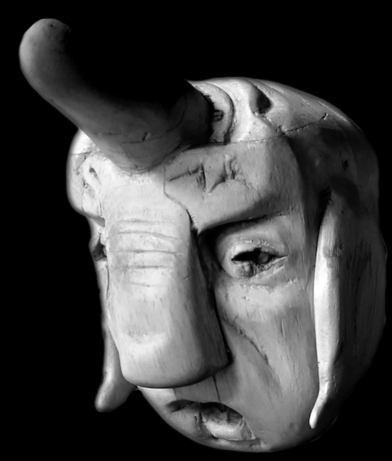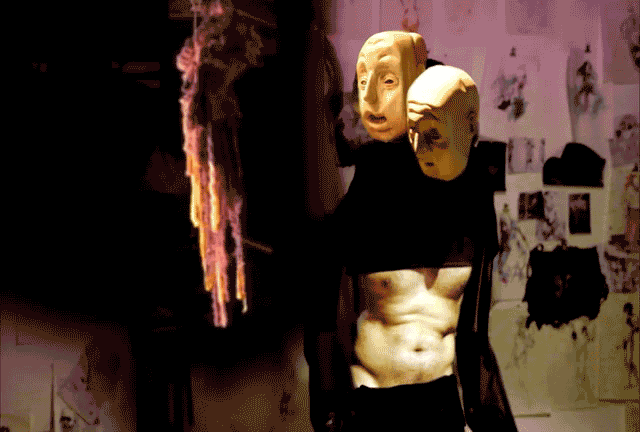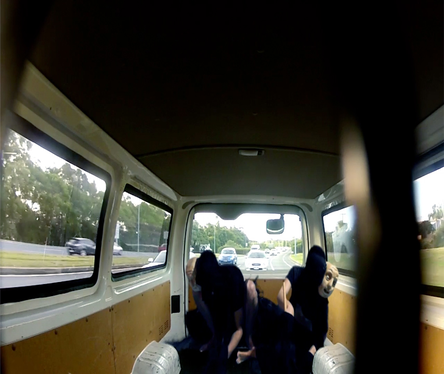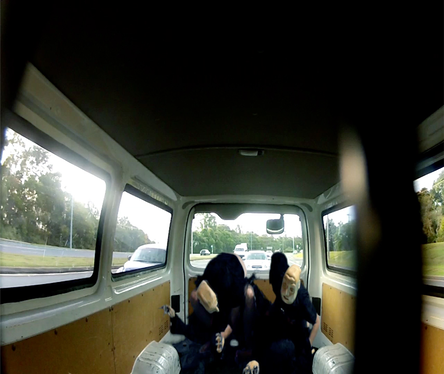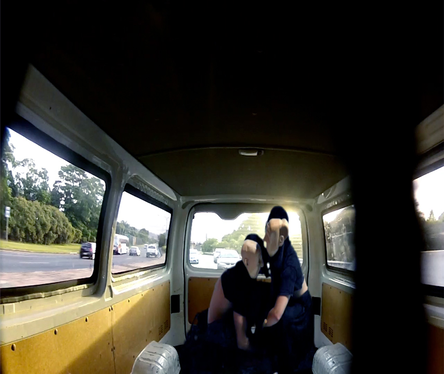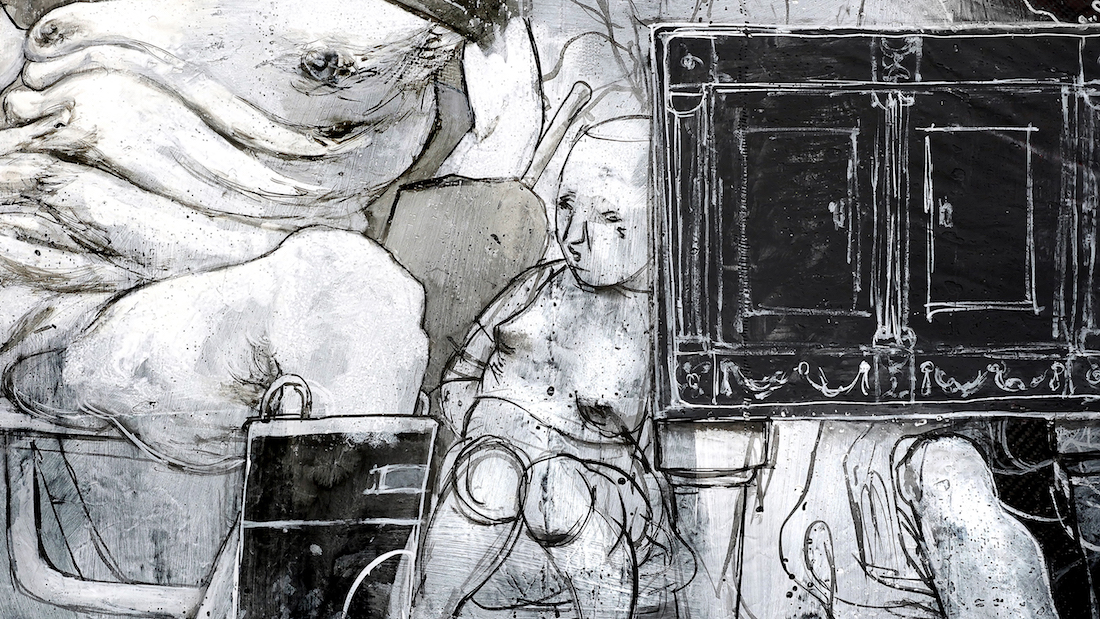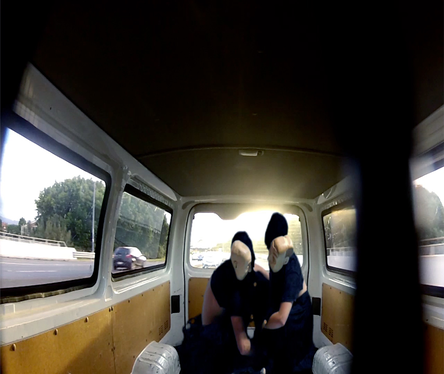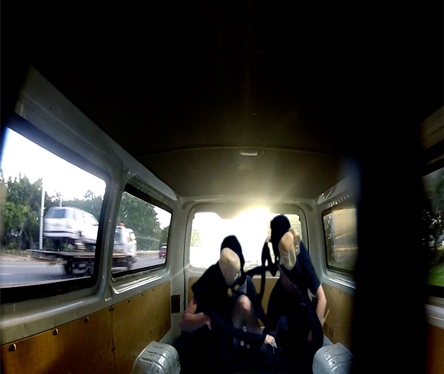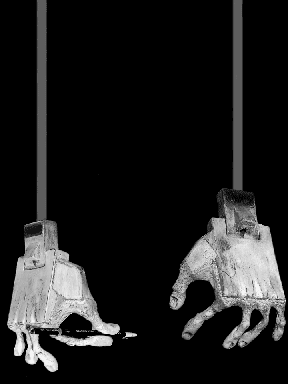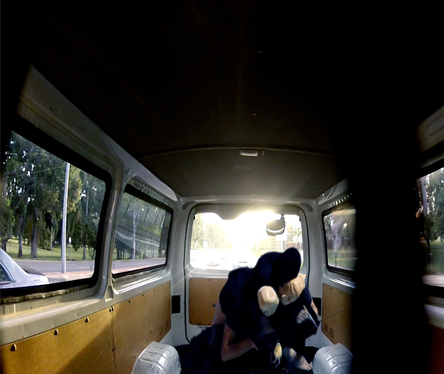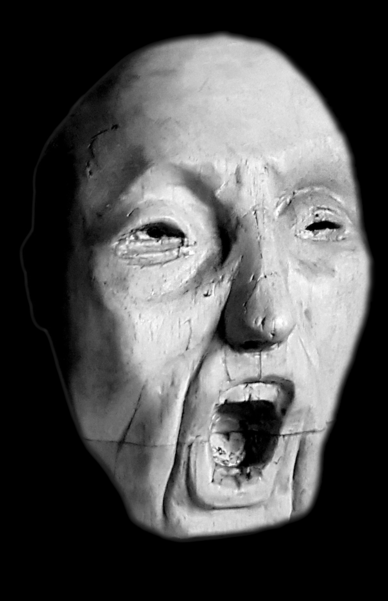26 Gombrich. Meditations on a Hobby Horse…1985, 9.
27 Mitchell. What Do Pictures Want? 2005, 46.
28 Mitchell. “What Do Pictures “Really” Want?”. 1996, 72.
Ernst Gombrich’s famous dictum in Meditations on a Hobby Horse asserts that ‘All art is ‘image-making’ and all image-making is rooted in the creation of substitutes.’26 Gombrich considers a broomstick’s behaviour as a horse in terms of proper functioning: it must both function ‘as if’ it were a horse and the function must ‘matter’ to the puppeteer. This functional matrix deletes all power and control from the puppet-stick. WJT Mitchell, however, is willing to conjecturally entertain the animist position in order to liberate artworks from a subordinate semiotic stranglehold:
The keys to this modification/dislocation are (1)assent to the constitutive fiction of pictures as ‘animated’ beings, quasi-agents, mock persons; and (2)the construal of pictures not as sovereign subjects or disembodied spirits but as subalterns whose bodies are marked with the stigmata of difference, and to function both as ‘go-betweens’ and scapegoats in the social field of human visuality.27
Having also described pictures as ‘marked with all the stigmata of personhood’,28 Mitchell’s pictures join Olimpia, Courbet’s lay figure, Toulon's murderous puppets and Rushdie’s Little Brain in challenging our presumptions about the estrangement of maker and object. Puppets are like pictures (and horsey broomsticks) and puppet’s pictures are like puppets. In defiance of Gombrich’s mandate, puppets cannot adequately behave ‘as if’ because they are not tethered to an agent compos mentis or to a clean sign-referent. In the studio, puppets tend to reflect primarily on themselves and their own plural corporeality. Puppets will always ‘double-malfunction’, firstly as unstable substitute objects, and secondly as heretics and insurgents in the stable meaning-field of the imagination.
The Six, like their studio puppet and lay figure predecessors, are just wood, fabric, clay and simple articulations that rotate and flex. They have six heads and they often work together, joining in bicephalic and tricephalic arrangements. Their methods of drawing — stabbing, pulling and twisting a clutching hand — are clumsy. Their heads are wooden and carved. Their hands are stiff but pliable. They hold drawing tools firmly and they operate the shutter release mechanism of a camera with some effort, preferring the self-timer. They are naked in most of the work although bits of costume creep into the studio (the theatrical is always prowling at the door). The first works made by the Six were two instant self-shots taken with a mid-century Polaroid MP-4 Land camera (which frequently malfunctions) followed by a large drawing on carbon fibre of a pair of the puppets regarding themselves in a studio mirror. Hundreds of sketches, photographs, videos and drawings have followed. All share two important qualities: they are all cloistered in the life studio, and they all have the same subject matter: the puppets themselves. Although there is ample precedent for artists eschewing authorship, abdicating studio processes to others and claiming phantasmic possession in the making of work, life drawing has consistently maintained its rigorous adherence to single authorship and rational study of the posing body (disrobing, looking, scratching, silent, antiseptic, proud). This is what makes a puppet life studio so intriguing. Puppets aren’t attached by culture or history to the things they create. They are volatile creatures estranged from their own experiences. They malfunction spectacularly. They also provide a stark analogy for drawing as a thing outside ourselves, both lifeless and teeming with life, a dummy commodity and an animating force.
Every aberration and malfunction spawns its alternative normative possibility. The philosopher Paul Bloomfield, working from Hume, analyses malfunction, modal possibility and the difficulty in parsing modals and counterfactuals to conclude that a malfunctioning thing, frankly every modal ‘oughtn't’, implies an alternative ‘possible world’ in which the thing is functioning as it ought and thus behaving as it ought to behave.29 Puppets’ implicit estrangements and disruptions assert an alternative possible world in which the life studio is functioning as it ought, and thus may depressingly reinforce the stereotypes and politics they intend to upset. And, to paraphrase Bloomfield, that world may well be the actual world. Perhaps this is the ‘madness’ Kenneth Gross cites as the essence of puppets.30 We continue to afford them myriad authorities in the hope that they will transfigure us and our (art) world, and, in their madness and ours, resolve our estrangements, but perhaps they only buttress our normative behaviours and our inability to give ourselves over to them completely.
This is an evolving research stream and studio practice. The puppets are becoming more assertive and less careful, and also more contagious. I am confident, if disconcerted, that they will proliferate and infect other life studios and drawing processes.
References
Bell, John. Puppets, Masks, and Performing Objects. Cambridge, Mass.: MIT Press, 2001.
Bell, John. “Playing with the Eternal Uncanny.” In The Routledge Companion to Puppetry and Material Performance: Dassia Posner, Claudia Orenstein, John Bell (eds.). London. Routledge, 2014.
Bloomfield, Paul. Moral Reality. Oxford; New York: Oxford University Press, 2001.
Borzello, Frances. The Artist’s Model. London: Junction Books, 1982.
Geczy, Adam. The Artificial Body in Fashion and Art: Marionettes, Models and Mannequins. New York: Bloomsbury Academic, 2016.
Gombrich, E. H. Meditations on a Hobby Horse: And Other Essays on the Theory of Art. 4th ed. Chicago: University of Chicago Press, 1985.
Gross, Kenneth. Puppet: An Essay on Uncanny Life. Chicago; London: University of Chicago Press, 2011.
Hoffmann, E. T. A., Leonard J. Kent, and Elizabeth C. Knight. Selected Writings of E. T. A. Hoffmann. Chicago: University of Chicago Press, 1969.
Jespersen, Bjorn, and Massimiliano Carrara. “Two Conceptions of Technical Malfunction.” Theoria 77 no. 2 (2011): 117-38.
Leverette, Marc. “The Funk of Forty Thousand Years; Or, How the (Un)Dead Get Their Groove On.” In Zombie Culture: Autopsies of The Living Dead. Lanham, Maryland.: Scarecrow Press, 2008.
Mayhew, Margaret. “The Naked and the Blind; Exploring the Badness of Life Drawing.” TRACEY, (2008): 1-17.
Méliès, George. L’Artiste at le Mannequin. Star Films cat. 284. 1900.
Mitchell, W.J.T. “What Do Pictures “Really” Want?”. October 77 (1996): 71-82.
Mitchell, W. J. T. What Do Pictures Want?: The Lives and Loves of Images. Chicago: University of Chicago Press, 2005.
Munro, Jane. Silent Partners: Artist and Mannequin from Function to Fetish. New Haven: Yale University Press, 2014.
Nelson, Victoria. The Secret Life of Puppets. Cambridge, Massachusetts.: Harvard University Press, 2001.
Phillips, Sarah R. Modeling Life: Art Models Speak About Nudity, Sexuality, and the Creative Process. Albany: State University of New York Press, 2006.
Platz, William. “Drawing Live.” INDA: International Drawing Annual 8, Cincinnati: Manifest Press, 2014.
Platz, William. “Posing Zombies: Life Drawing, Performance and Technology.” Studio Research Journal 3, Octivium Press, 2015.
Puppet Master. Directed by David Schmoeller. Full Moon Features, 1989.
Rushdie, Salman. Fury: A Novel. 1st ed. New York: Random House, 2001.
Schaffner, Ingrid, Carin Kuoni, John Bell, and University of Pennsylvania. Institute of Contemporary Art. The Puppet Show. Philadelphia, Pa.: Institute of Contemporary Art, University of Pennsylvania, 2008.
Tillis, Steve. “Towards an Aesthetics of the Puppet.” ProQuest Dissertations Publishing. Diss. 1990.
Trimingham, Melissa. “How to Think a Puppet.” Forum Modernes Theater 26, no. 1 (2011): 121-36.
Ujazdowski Castle Centre for Contemporary Art. Objects Do Things. Retrieved 11Jan 2019 from: https://u-jazdowski.pl/en/programme/wystawy/rzeczy-robia-rzeczy
Zamir, Tzachi. “Puppets.” Critical Inquiry 36, no. 3 (2010): 386-409.
